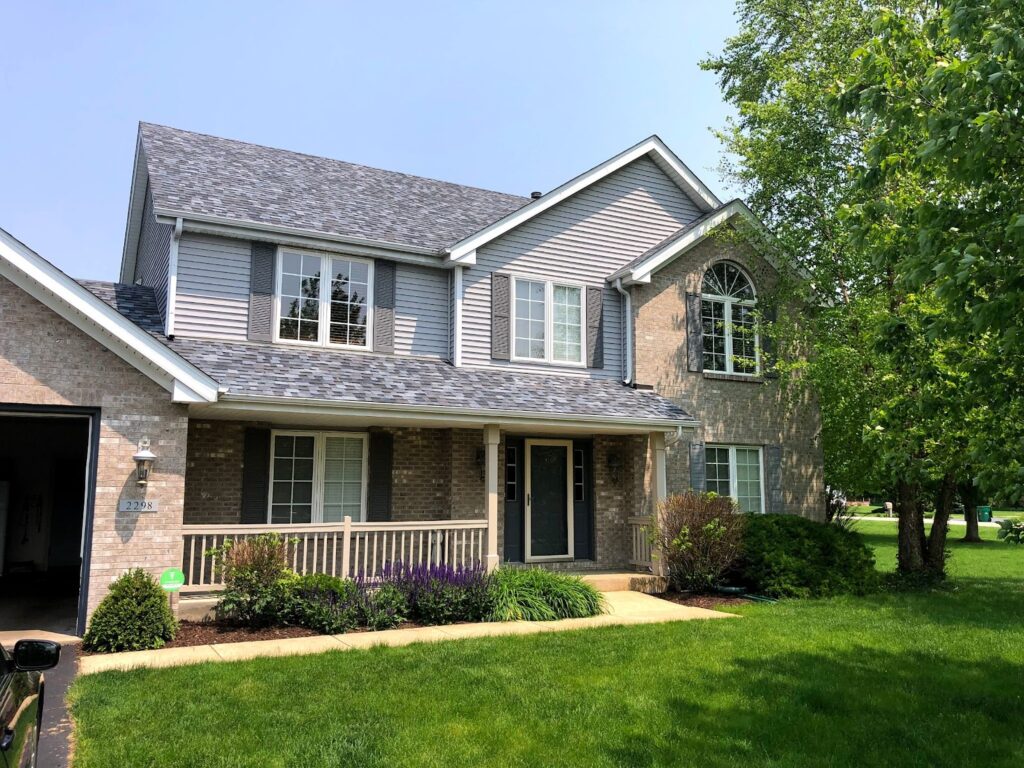When Memphis summers hit full swing, your air conditioning works overtime, and so do your energy bills. The solution might be simpler than you think. Red’s Tree Service has seen how the right shade trees can act like natural air conditioners, cutting cooling costs and making outdoor spaces more bearable during those long, humid Tennessee months.
How Shade Trees Transform Your Property’s Climate
Think about the last time you walked from a sunny parking lot into the shade of a large oak or maple. That instant relief you felt goes beyond psychological comfort, and it’s science in action. Shade trees can reduce the temperature around your home by 10 to 15 degrees, creating natural microclimates that make your property more comfortable and your HVAC system’s job much easier.
Large shade trees work through a process called evapotranspiration, where they release water vapor through their leaves, creating a cooling effect similar to how sweating cools your body. This natural air conditioning benefits the immediate area under the canopy and extends to your entire property, reducing the ambient temperature around your home’s exterior walls, roof, and windows.
The Financial Impact on Your Energy Bills
The cost savings from well-positioned shade trees extend far beyond your monthly utility statement. These natural cooling systems create multiple layers of financial benefits that compound over time, making them one of the smartest investments you can make in your property.
Direct Cooling Cost Reductions
When strategically placed shade trees block direct sunlight from hitting your home’s roof and windows, your air conditioning system doesn’t have to work as hard to maintain comfortable indoor temperatures. According to energy efficiency studies, properly positioned shade trees can reduce cooling costs by 15 to 35 percent during peak summer months.
Long-term Property Value Benefits
Beyond immediate energy savings, mature shade trees increase your property value significantly. Real estate professionals consistently report that homes with established shade trees sell faster and for higher prices than comparable properties without mature landscaping. In Memphis’s competitive housing market, this advantage can translate to thousands of dollars in additional property value.
Reduced HVAC System Wear
Your air conditioning unit experiences less strain when it doesn’t have to combat excessive heat gain from direct sunlight. This reduced workload extends your system’s lifespan and decreases the frequency of costly repairs and maintenance calls.
How to Choose the Right Trees for Maximum Impact
Not all trees provide equal shade benefits, and selecting the wrong species can create more problems than solutions. You need trees that grow large enough to provide substantial coverage, have dense canopies that effectively block sunlight, and are well-suited to Memphis’s climate conditions. Consider these factors when planning your shade tree strategy:
- Mature size and growth rate – Fast-growing trees like red oaks and tulip poplars provide quicker results, while slower-growing species like live oaks offer longer-term benefits
- Canopy density – Trees with thick, full canopies block more sunlight than those with sparse foliage
- Seasonal characteristics – Deciduous trees provide summer shade while allowing winter sunlight to warm your home naturally
- Root system behavior – Some trees have aggressive root systems that can damage foundations, driveways, or underground utilities
Storm resistance – In Memphis’s weather patterns, you want trees that can withstand strong winds and ice storms
Strategic Placement Makes All the Difference
Simply planting shade trees anywhere on your property won’t deliver optimal results. The positioning of your trees determines how effectively they’ll reduce your energy costs and improve your comfort. Trees planted on the south and west sides of your home provide the most significant cooling benefits, as these areas receive the most intense afternoon sunlight.
However, placement involves more than compass directions. You must consider your home’s architectural features, existing landscaping, underground utilities, and future growth patterns. A tree planted too close to your house might eventually damage your roof or foundation, while one placed too far away won’t provide meaningful shade coverage.
Professional assessment ensures your shade trees will deliver maximum benefits without creating future problems. Tree care specialists can evaluate your property’s specific conditions, recommend appropriate species, and suggest optimal placement strategies that account for both immediate needs and long-term growth patterns.
Maintaining Your Shade Tree Investment
Getting your shade trees off to a strong start requires more attention than many homeowners realize, but the effort pays dividends for decades.
Early Care Requirements
New plantings need consistent watering during Memphis’s dry periods, especially in the first two growing seasons when root systems are establishing. Proper mulching around the base retains soil moisture and regulates temperature, while professional pruning encourages strong branch development from the beginning.
Soil Quality Considerations
Here’s something most people don’t consider: your soil quality directly affects how well your trees will cool your property. Compacted or nutrient-poor soil restricts root growth and reduces the tree’s ability to uptake water for evapotranspiration. Having your soil tested and amended before planting can mean the difference between a tree that struggles for years and one that reaches its full cooling potential quickly. Poor soil conditions can reduce a tree’s cooling effectiveness by up to 40 percent.
Ongoing Maintenance Needs
Even mature shade trees need regular health assessments to maintain their energy-saving benefits. Storm damage, disease, or pest infestations can quickly reduce canopy density, eliminating much of the cooling effect you depend on. Professional pruning maintains optimal light filtration while preventing weak branches that could fail during severe weather.

Experience Smarter Shade and Lower Bills
If you’re looking for a way to cool your home naturally this summer, the right trees can make a real difference. Red’s Tree Service in the Memphis area can help you figure out where shade makes the most impact and which trees will thrive long-term on your property.
When you’re ready to start saving on energy bills while making your yard more comfortable, contact us, and we’ll help you map out a plan that makes sense.
This post first appeared on https://redstreeservice.com